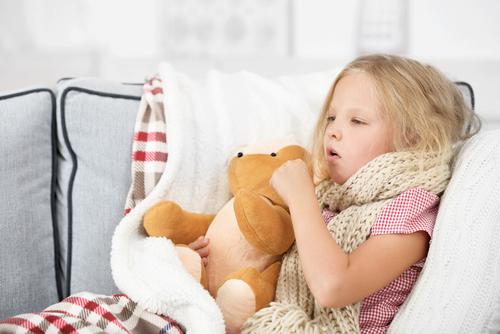
Hillary Clinton's camp has said she has pneumonia, which accounts for her wobbling at a September 11th ceremony. Like other sources of reliable medical and scientific information, we have been asked about the diagnosis of pneumonia and her potential for being contagious. Unlike most media outlets, we won't make diagnostic statements based on videotape and supposition, but we will spend a few moments talking about pneumonia.
Pneumonia is a broad term that means inflammation of the lung from an infectious source – that can be bacteria, viruses, and fungal pathogens. This results in damage to the tiny air sacs (alveoli) where oxygen transfers to the blood and carbon dioxide is released. When inflamed, the alveoli fill with fluid, resulting in the signs of symptoms of pneumonia, most commonly a cough. There are other associated symptoms, such as fever, chills and shortness of breath.
The CDC reports that “about 1 million people have to seek care in a hospital due to pneumonia, and about 50,000 people die from the disease.” In the United States, adults are the most affected age group but globally pneumonia is the leading cause of death among child under five years old.
How contagious is pneumonia?
Bacterial pneumonia is the most common form in adults while viral pneumonia affects about a third of adults. Despite popular belief, you cannot “catch” pneumonia. More accurately, you can be exposed to increased amounts of the bacteria or virus that causes an individual’s pneumonia. Your exposure is increased by being around someone who is infected, and coughs. Coughing ejects about 3,000 droplets of saliva, often at speeds of up to 50 miles per hour. It is the bacteria or viruses in those droplets that are responsible for transmission of the infection from one person to another. Once airborne they can settle on their surroundings or be inhaled.
What about vaccines?
Because pneumonia is mostly a disease of the very young and old, vaccines are designed for these two groups. There are two Streptococcus pneumoniae vaccines available today; one (PCV13) can be given to everyone, but, is most commonly given to babies. The other (PPSV23) is recommended for all adults aged 65 years or older.
For infants, PCV13 is given on the schedule with other recommended vaccines, as a series of four doses, one dose at each of these ages:
•2 months
•4 months
•6 months
•12 - 15 months
This vaccine protects against 13 different kinds (serotypes) of Streptococcus pneumoniae. These types are determined by the composition of the outermost layer of the bacterial cell, a sugary coating called a capsular polysaccharide. This capsule enables bacteria to stick to cells in the body and also disguises them such that they become able to evade the immune system. While protection from 13 kinds may sound like a lot, Streptococcus pneumoniae has over 90 different serotypes, so scientists want to make sure the vaccine includes as many of the relevant serotypes as possible. Those serotypes are predicted using significant amounts of data each year.
PPSV23 is given to children over two years and adults. This vaccine is easier to produce because it is a stimulant of an adult immune system. This is accomplished by growing serotypes of Streptococcus pneumoniae bacteria, and purifying the capsular polysaccharide. When given to adults, their immune systems does the rest.
Here is the recommendation of the CDC:
- CDC recommends two pneumococcal vaccines for adults 65 years or older.
- You should receive a dose of the pneumococcal conjugate vaccine (PCV13) first, followed at least one year later by a dose of the pneumococcal polysaccharide vaccine (PPSV23).
- If you've already received any doses of PPSV23, the dose of PCV13 should be given at least 1 year after receipt of the most recent PPSV23 dose.
- If you've already received a dose of PCV13 at a younger age, another dose is not recommended.
If we are really interested in the health of our presidential candidates, perhaps the best question to ask is whether either of the two principal candidates, both over 65, have had a pneumococcal vaccine. This might tell us more about their views on health care and their health than all of the media speculation.



